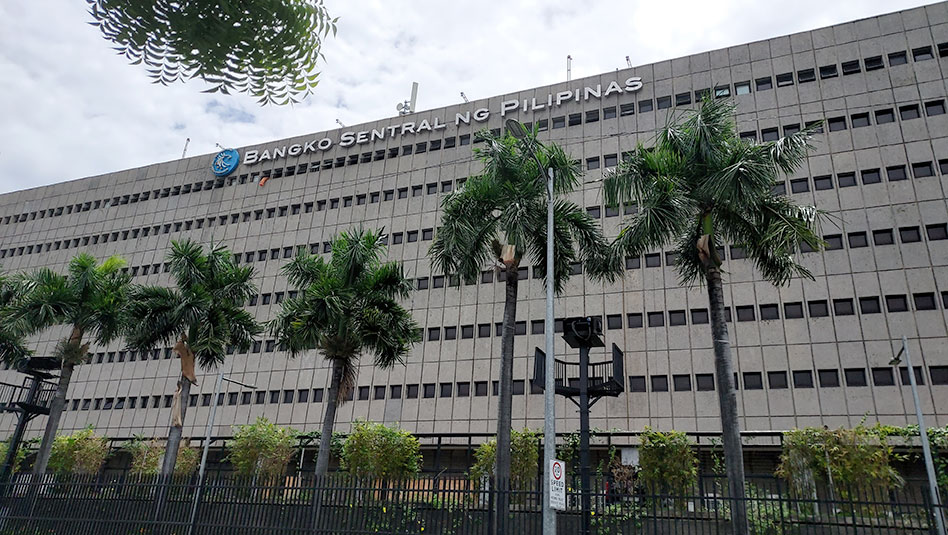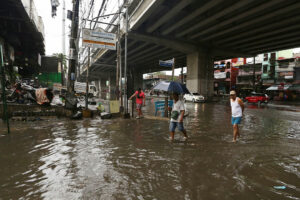




Policy Rate Updates: Closer to BSP’s Goldilocks moment
 DOWNLOAD
DOWNLOAD

Inflation Update: Speeds up but remains below target
 DOWNLOAD
DOWNLOAD

Monthly Economic Update: Fed back on track
 DOWNLOAD
DOWNLOAD


August infrastructure spending declines 11%

Infrastructure spending by the National Government declined by an annual 11.1% in August as heavy rains hampered the implementation of public works projects, the Department of Budget and Management (DBM) said.
In its latest report posted on its website on Tuesday, the DBM said infrastructure and other capital outlays fell to PHP 108.6 billion from PHP 122.1 billion a year earlier.
Month on month, infrastructure spending dropped by 13.1% from PHP 125 billion in July.
The DBM attributed the drop to lower disbursements by the Department of Public Works and Highways (DPWH) due to “adverse weather conditions which slowed down project implementation.”
Rizal Commercial Banking Corp. Chief Economist Michael L. Ricafort said recent typhoons had caused heavy floods that delayed infrastructure projects.
The DBM also cited “delays in the submission of billing documents by contractors, which affected the timelines for the processing and release of payments for ongoing projects.”
There were also adjustments in project timelines as some major infrastructure projects experienced delays or were rescheduled, it said.
About PHP 22 billion worth of outstanding checks as of end-August had not yet been encashed by contractors, the DBM said.
“Likewise, capital expenditures were down year on year sans the big-ticket releases for local counterpart funds for the various foreign-assisted projects of the DoTr (Department of Transportation),” the DBM said.
As of Aug. 31, key allotment releases included PHP 13.3 billion under the DoTr for capital outlays.
This was allocated “mostly to cover the loan proceeds requirement for the implementation of the Davao Public Transport Modernization Project and for the payment of right-of-way expenses relative to the implementation of the Metro Manila Subway Project Phase I and North-South Commuter Railway System,” the DBM said.
About P3.7 billion was also released to the Department of Information and Communications Technology at the end of August as part of the funding requirements for the government’s Free Internet Wi-Fi Connectivity in Public Places program.
In the January-August period, infrastructure and other capital outlays rose by 14.2% to PHP 845.3 billion from PHP 740.3 billion a year ago.
The DBM expects infrastructure spending to improve after the issuance of PHP 15.1 billion worth of allotments to the DPWH in September. This will mainly cover the government’s counterpart requirements for various foreign-assisted projects this year, such as the Metro Manila Subway, North-South Commuter Railway System and Davao Public Transport Modernization Project.
About PHP 10 billion will be allotted for the revised modernization program of the Armed Forces of the Philippines.
Mr. Ricafort said agencies would likely ramp up infrastructure spending before the midterm elections in 2025.
“For the coming months, government spending especially on infrastructure and other projects could be accelerated in preparation for the midterm elections, especially before the election ban, which could be a major source of economic growth.”
Nigel Paul C. Villarete, senior adviser on public-private partnerships at the technical advisory group Libra Konsult, Inc., said the government should implement catch-up plans as bad weather could affect construction schedules.
“Midyear to later months will have much more deviations in spending due to the onset of the rainy season, which has a significant effect on construction schedules,” he said in a Viber message.
The government aims to spend 5-6% of gross domestic product on infrastructure this year. — Beatriz Marie D. Cruz
This article originally appeared on bworldonline.com





 By BusinessWorld
By BusinessWorld